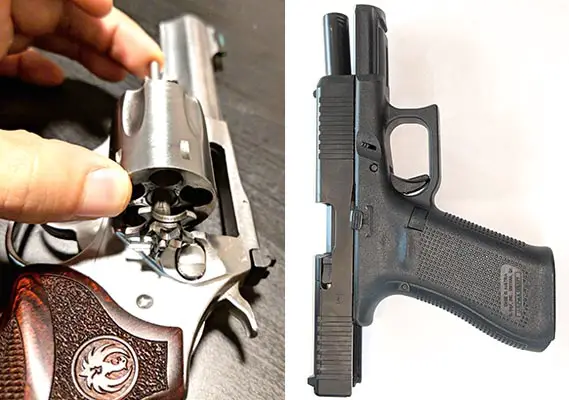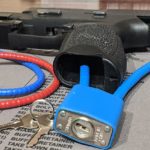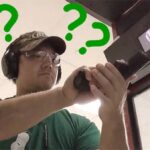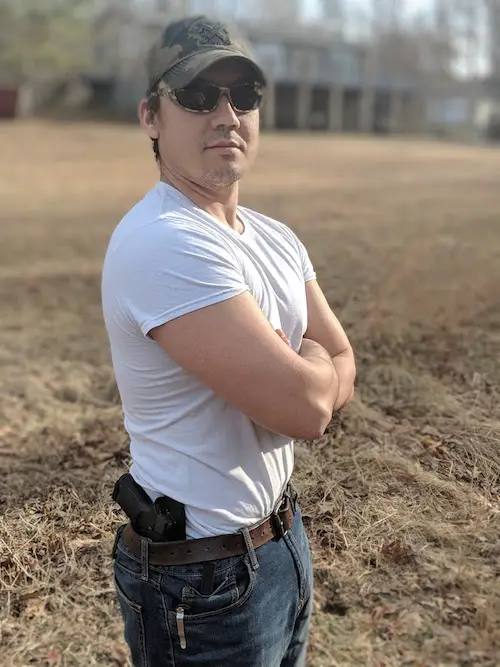Concealed carry and shooting communities frequently use terms interchangeably. However, there are occasions where terms are used incorrectly. For instance when someone asks the difference between pistols and revolvers. Ironically, a revolver is a type of pistol, but not every pistol is a revolver.
Today, I’m discussing the differences between pistol types. For the purposes of this article I’ll only be discussing revolvers and automatics. If you want to know more about break action firearms you can read my other article.
Table of Contents
Definition Of A Pistol
Before we go any further it is important to define what a “pistol” is. According to the ATF, the following defines a pistol:
The term “Pistol” means a weapon originally designed, made, and intended to fire a projectile (bullet) from one or more barrels when held in one hand, and having:
- a chamber(s) as an integral part(s) of, or permanently aligned with, the bore(s);
- and a short stock designed to be gripped by one hand at an angle to and extending below the line of the bore(s).
Therefore, a revolver qualifies as a pistol according to this definition by the ATF. Many people refer to an automatic as a “pistol” despite both types of firearms being classified as pistols.
However, there are design and functional differences between a “pistol” and a revolver. A revolver has multiple chambers, while an automatic has only one chamber. Additionally, automatic reloading pistols rely on the energy released during combustion to cycle the slide and load the next round.
Difference Between Pistols & Revolvers: By Design
The definition of a pistol involves many technical terms. However, the keywords to focus on are chamber, barrel, and bore. The chamber is where the cartridge sits prior to firing. Next, the barrel is the length of tube the bullet travels down when a round is discharged. Finally, the bore is the inside of the barrel and is usually rifled to facilitate a truer flight pattern.
Design of an Automatic Pistol
First, I’m going to discuss the design of an automatic. Just like revolvers, automatic pistols have a single barrel.
However, automatic pistols have a single chamber that house a single cartridge. Additionally, automatics have a chamber integrated into the barrel and classifies this type of gun as a pistol.
A spring loaded magazine contains additional cartridges. The magazine sits in the magazine well housed inside the grip of the pistol.
NOTE: I use the term “automatic” as a shortened version for “auto-loading” the technical term for this type of gun is “semi-auto” or “semi-automatic.” Check out my YouTube video for why I do this.
Revolver Design
A revolver has a fixed number of chambers. Each chamber houses a single cartridge. Cartridges are ready to fire when aligned with the bore. The cylinder contains the chambers and is commonly referred to as “the wheel.”
Difference In Function: Revolvers & Autos
The cycle of operation is a major difference between a revolver and an automatic pistol. Next, I’m going to talk about the differences in action between the two types of pistols. Additionally, I’ll discus how the design causes these differences.
Action of an Automatic
The above is an animation simulates the action of an automatic. When the slide is fully retracted a cartridge is fed into the single chamber of an automatic. Pressing the trigger causes the firing pin to strike the primer and discharges a round.
Pressure from the combustion forces the slide rearward. The handgun extracts and ejects each spent casing. Afterwards, the handgun loads another cartridge from the magazine into the chamber. This process continues until the gun runs out of new cartridges.
Automatics load one cartridge at a time into a single chamber making this action different from a revolver. Additionally, the ejection of the spent casing prior to loading another cartridge is another difference in the cycle of operation.
How A Revolver Operates
Above is an animation of how a revolver operates. Notice that cocking the hammer rotates the cylinder. When the cylinder rotates, it aligns a new chamber with the bore. Thus, the number of chambers in the wheel indicates how many rounds a revolver carries.
Unlike automatics, casings are left in the chamber after a round has been fired. Opening the action of a revolver and pressing the ejector rod empties spent casings en masse.
Parting Shots
Fundamentally, there cannot be a difference between pistols and revolvers because a revolver is a type of pistol. Hopefully the above article and animations make clear the difference between a revolver and an automatic pistol. If you found this information helpful, please like and share this page with your social network. Alternatively, please leave a comment for the community. Either way you are helping spread this knowledge to others.









